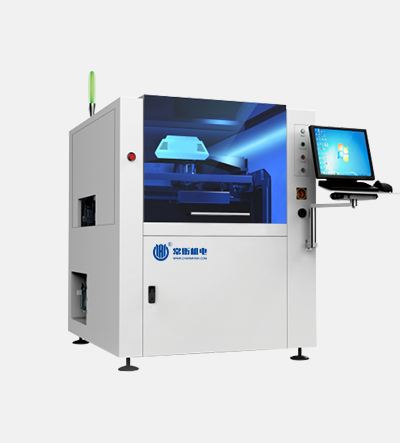How to Set Up a High-Efficiency SMT Production Line Step by Step
Effective SMT production line layout begins with three core considerations: material flow efficiency, workstation ergonomics, and thermal management requirements. The layout must accommodate both current production needs and future scalability, particularly for emerging technologies like 01005 passive components and advanced packaging formats.
Material Handling System Design Principles
Modern SMT material handling systems prioritize three key functions:
- Minimizing PCB travel distance between stations (ideal: <8 meters end-to-end)
- Maintaining nitrogen purge environments for oxidation-sensitive solders
- Automated component verification using barcode/RFID tracking
Buffer zones between critical stations like stencil printers and pick-and-place machines help prevent thermal interference while allowing <90 second equipment access for maintenance.
Workflow Optimization Through Line Balancing
Production engineers achieve optimal throughput by:
- Matching machine cycle times to Takt requirements (±5% tolerance)
- Implementing parallel processing for high-mix environments
- Using digital twin simulations to predict bottleneck scenarios
Recent advancements incorporate real-time WIP tracking through MES integrations, enabling dynamic rerouting of boards during unexpected downtime events.
Smart Automation Integration Framework
Leading SMT lines now combine:
- Vision-guided AGVs for feeder replenishment (≈3 minute response time)
- Closed-loop thermal compensation in reflow zones
- AI-powered defect pattern recognition
These systems require standardized communication protocols like Hermes-9853 or IPC-CFX to ensure seamless machine-to-machine data exchange.
Equipment Selection for SMT Production Line
High-Speed Pick-and-Place Machine Criteria
Modern pick-and-place systems require a minimum placement speed of 35,000 components per hour (CPH) to meet high-volume production demands. Precision metrics should prioritize ±25-micron repeatability for fine-pitch components below 0.4mm pitch. Opt for machines with 12+ nozzle heads and 8-megapixel vision systems to handle 01005-size passives and 0.3mm BGAs.
Stencil Printer Precision Requirements
Stencil printers must maintain ±15μm registration accuracy to ensure consistent solder paste deposition. For micro-BGA applications, electropolished stainless steel stencils with 100-130μm thickness minimize aperture clogging while achieving 90% transfer efficiency.
Reflow Oven Thermal Profile Specifications
Reflow ovens require 10-12 heating zones to achieve optimal thermal profiles for mixed-technology boards. Nitrogen-assisted systems maintain <100 ppm oxygen levels, reducing solder balling by 60% in ultra-fine-pitch applications.
AOI System Configuration Best Practices
Automated optical inspection systems need 20-megapixel cameras with 5-angle lighting to detect tombstoning below 15μm height variance. Configure systems to inspect 220+ components/minute while maintaining ≈0.5% false-call rates.
SMT Production Line Installation & Calibration
Mechanical Integration Sequence for SMT Lines
Installation begins with validating floor plans against equipment footprints and material flow requirements. Laser alignment tools verify positional accuracy within 0.05 mm tolerance before anchoring components to vibration-dampening mounts.
Software Calibration for Seamless Integration
Calibration protocols synchronize machine vision systems with placement coordinates using fiducial markers as reference points. Closed-loop feedback mechanisms adjust conveyor speeds in real time to maintain ±0.3°C thermal stability across reflow zones.
Initial Line Run Verification Protocols
Validation runs test the line under graduated production loads:
Operators execute three consecutive zero-defect runs at 85% maximum speed before releasing the line for production.
Operator Training for SMT Production Line
Machine-Specific Operation Certifications
Effective operator training begins with machine-specific certifications addressing pick-and-place systems, reflow ovens, and inspection equipment in SMT production lines. Certification protocols follow IPC-7711/7721 guidelines.
Preventive Maintenance Schedule Development
Proactive maintenance training focuses on developing data-driven schedules that reduce unplanned downtime. Maintenance teams learn to interpret equipment analytics dashboards and implement condition-based workflows.
Quality Monitoring in SMT Production Line
SPI/AOI System Implementation Strategies
Effective quality monitoring begins with integrated Solder Paste Inspection (SPI) and Automated Optical Inspection (AOI) systems. Leading manufacturers combine inline SPI/AOI configurations with AI-powered defect classification.
Real-Time Process Control Methodologies
Modern SMT lines employ statistical process control (SPC) dashboards that track 15+ parameters simultaneously. Wireless IoT sensors on conveyor systems further optimize throughput by coordinating machine cycles within 0.5-second precision windows.
Defect Analysis and Corrective Action Plans
Advanced analytics transform inspection data into actionable insights:
- Root cause analysis maps 93% of defects to specific process stages
- Pareto charts prioritize recurring issues like tombstoning or insufficient solder
- Automated correction scripts adjust printer pressure or feeder alignment in <90 seconds
SMT Production Line Process Validation
IPC-610 Standards Compliance Testing
IPC-610 compliance testing validates solder joint quality and component placement accuracy in SMT assemblies. Ionic contamination testing ensures electrochemical reliability.
Thermal Profiling Optimization Techniques
Thermal profiling optimization establishes precise reflow oven curves using embedded thermocouples and real-time data logging. Engineers fine-tune heating zones to maintain solder paste manufacturers' specified peak temperatures within ±3°C.
Continuous Improvement of SMT Production Line
OEE Tracking for Production Efficiency
Overall Equipment Effectiveness (OEE) quantifies production efficiency by measuring availability, performance, and quality. Advanced dashboards correlate machine states with material consumption rates.
SMED Principles for Changeover Optimization
Single-Minute Exchange of Die (SMED) methodologies reduce product changeover times from hours to minutes. Key enablers include standardized stencil storage systems and pre-configured oven profiles.
AI-Driven Process Adjustment Systems
Machine learning algorithms now predict solder defects 8 seconds before occurrence by analyzing thermal camera data and paste viscosity trends. Closed-loop systems also optimize energy consumption, cutting nitrogen usage in reflow ovens by 19%.
FAQs
What are the key considerations for SMT production line layout? The key considerations include material flow efficiency, workstation ergonomics, and thermal management requirements to accommodate both current needs and future scalability.
Why is it important to have a minimum placement speed for pick-and-place machines? A minimum placement speed, such as 35,000 components per hour (CPH), is essential to meet high-volume production demands efficiently.
How does real-time WIP tracking benefit the production line? Real-time WIP tracking through MES integrations allows dynamic rerouting of boards during unexpected downtime events, optimizing workflow.
What are some key features of modern AOI systems? Modern AOI systems often have 20-megapixel cameras with 5-angle lighting, capable of inspecting over 220 components/minute while maintaining low false-call rates.
How does thermal profiling optimization improve SMT lines? Thermal profiling optimization helps establish precise reflow oven curves and fine-tune heating zones, maintaining optimal temperatures for soldering.

